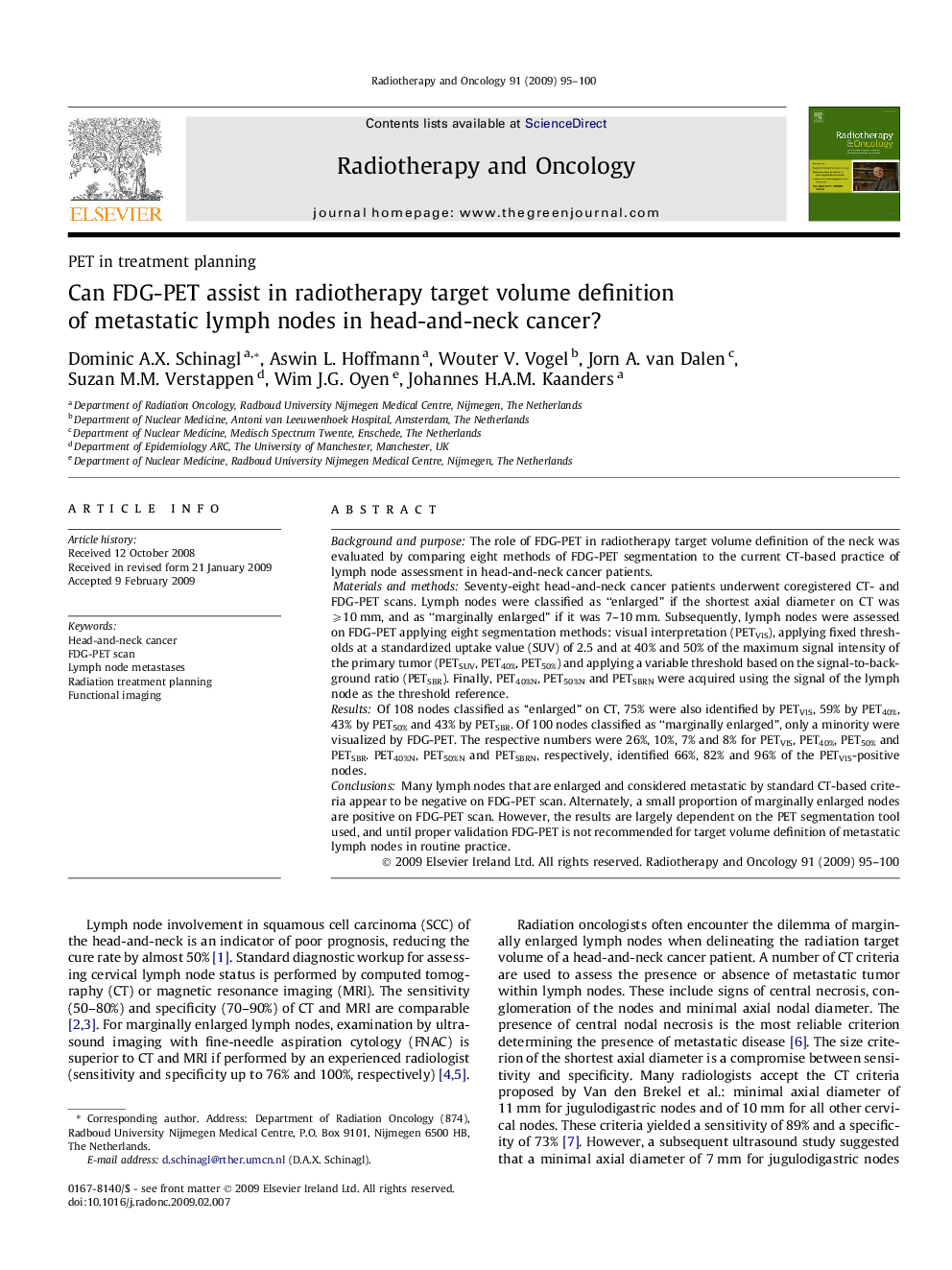| کد مقاله | کد نشریه | سال انتشار | مقاله انگلیسی | نسخه تمام متن |
|---|---|---|---|---|
| 2159441 | 1090858 | 2009 | 6 صفحه PDF | دانلود رایگان |

Background and purposeThe role of FDG-PET in radiotherapy target volume definition of the neck was evaluated by comparing eight methods of FDG-PET segmentation to the current CT-based practice of lymph node assessment in head-and-neck cancer patients.Materials and methodsSeventy-eight head-and-neck cancer patients underwent coregistered CT- and FDG-PET scans. Lymph nodes were classified as “enlarged” if the shortest axial diameter on CT was ⩾10 mm, and as “marginally enlarged” if it was 7–10 mm. Subsequently, lymph nodes were assessed on FDG-PET applying eight segmentation methods: visual interpretation (PETVIS), applying fixed thresholds at a standardized uptake value (SUV) of 2.5 and at 40% and 50% of the maximum signal intensity of the primary tumor (PETSUV, PET40%, PET50%) and applying a variable threshold based on the signal-to-background ratio (PETSBR). Finally, PET40%N, PET50%N and PETSBRN were acquired using the signal of the lymph node as the threshold reference.ResultsOf 108 nodes classified as “enlarged” on CT, 75% were also identified by PETVIS, 59% by PET40%, 43% by PET50% and 43% by PETSBR. Of 100 nodes classified as “marginally enlarged”, only a minority were visualized by FDG-PET. The respective numbers were 26%, 10%, 7% and 8% for PETVIS, PET40%, PET50% and PETSBR. PET40%N, PET50%N and PETSBRN, respectively, identified 66%, 82% and 96% of the PETVIS-positive nodes.ConclusionsMany lymph nodes that are enlarged and considered metastatic by standard CT-based criteria appear to be negative on FDG-PET scan. Alternately, a small proportion of marginally enlarged nodes are positive on FDG-PET scan. However, the results are largely dependent on the PET segmentation tool used, and until proper validation FDG-PET is not recommended for target volume definition of metastatic lymph nodes in routine practice.
Journal: Radiotherapy and Oncology - Volume 91, Issue 1, April 2009, Pages 95–100